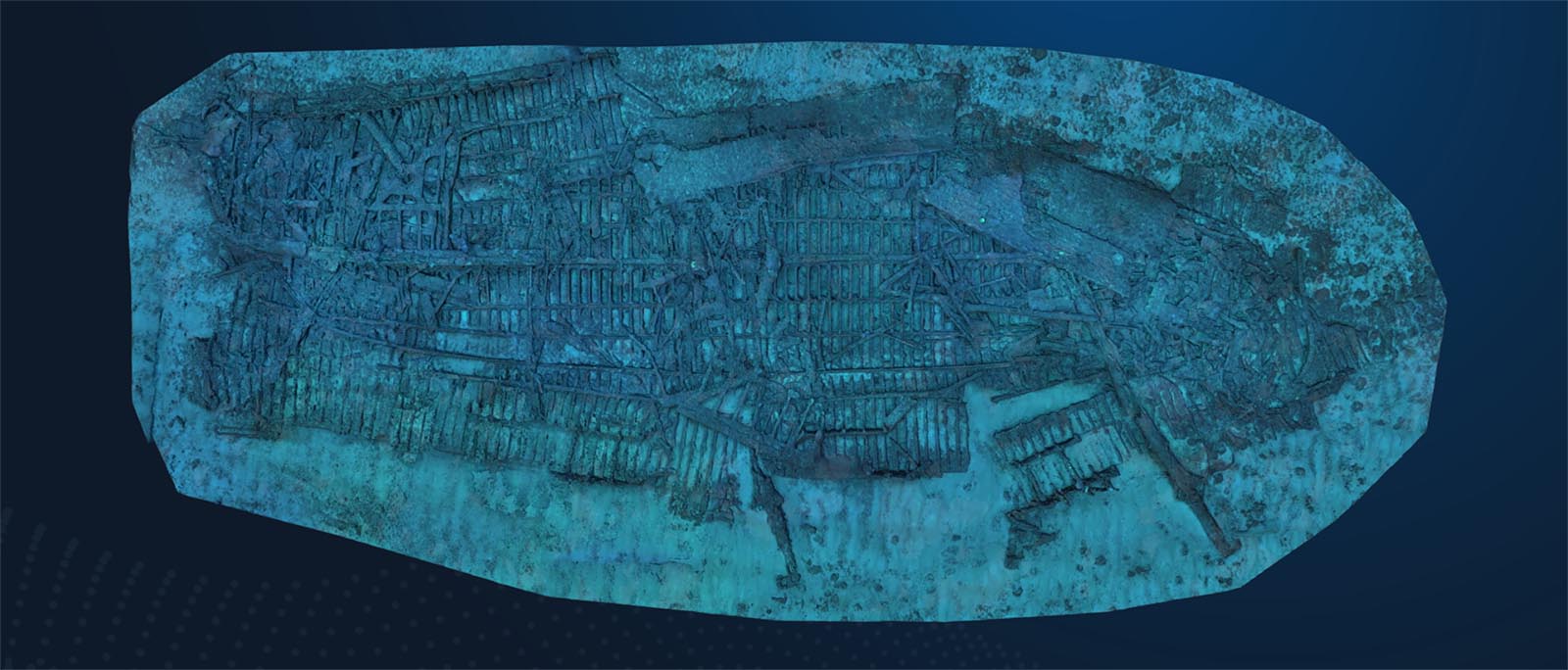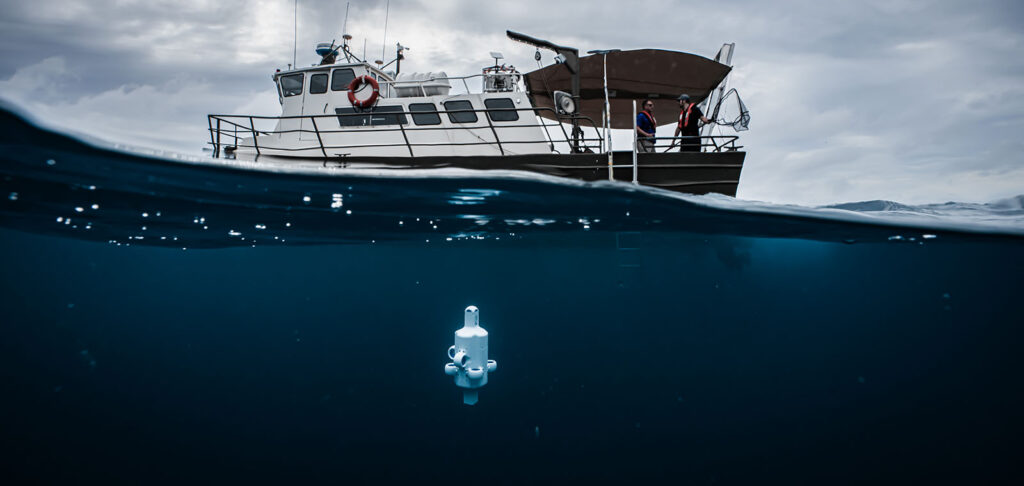
Hydrus Plunges Into Rottnest Ships Graveyard, Investigating Maritime Mysteries

Published on:
Australia, April 2024 – Advanced Navigation, a global leader in AI robotics and navigation technology, is bringing humans closer to the ocean like never before – starting with a drone.
Hydrus, a revolution in underwater robotic technology, was recently sent to the treacherous depths of the Rottnest ship graveyard located in the Indian Ocean, just off the coast of Western Australia. Upon unloading its data, the team was ecstatic to discover Hydrus had spotted a 64-meter shipwreck scattered across the seafloor (more than twice the size of a blue whale – the largest marine animal).
Parting the Sea for Underwater Heritage
Unfathomably, only 24% of the ocean has been explored and charted by humans. Included in the mysterious 76% are 3 million undiscovered shipwrecks with 1,819 recorded wrecks currently lying off the shore of Western Australia. Each one holds a key to humanity’s understanding of past culture, history and science. Beginning in the 1900s, the Rottnest graveyard became a burial ground for ships, naval vessels, aircraft and secretive submarines. The majority of these wrecks have yet to be discovered due to their depths ranging from 50m to 200m. Sourcing data from this depth often requires specialized equipment and training, causing the mission to be overly expensive and challenging.

Advanced Navigation Micro Hovering Autonomous Underwater Vehicle (AUV) deployed
Revealing the Ocean’s Secrets
“Small enough to be deployed by a single person, Hydrus utilized its advanced navigation and communication sensors to capture 4K video and imagery simultaneously. Upon returning to the surface, the team analyzed the data and was thrilled to find Hydrus had examined a 64-meter shipwreck. Learning the exact coordinates of the ship, the team used two Hydrus units to perform three missions, completing the full survey in just under five hours. This level of efficiency is crucial for underwater exploration where costs can heighten quickly.”
Speaking to the expedition, Peter Baker, Subsea Product Manager at Advanced Navigation.
Actual footage of shipwreck captured on Hydrus
Creating a Digital Copy of the Ocean
Specializing in shipwreck photogrammetry, Curtin University HIVE was able to rebuild a high-resolution replica of the wreck, using the data gathered by Hydrus. This involved taking 4K geo-referenced imagery and video footage from Hydrus to generate a 3D digital twin of the shipwreck.
3D model of shipwreck developed by Daniel Adams, Curtin University HIVE. Data provided by Hydrus.
“The inclusion of navigational coordinates for geolocation is a fantastic feature of Hydrus. It can’t be overstated how much this structure in data assists with constraining feature matching and reducing the processing time, especially in larger datasets.”
said Associate Professor Andrew Woods, at the Curtin University HIVE.
Western Australia is a Destination for Sunken History
Upon examination by Dr. Ross Anderson, Curator at the WA Museum, the historical significance behind the wreck was unveiled as a 100+-year-old coal hulk from Fremantle Port’s bygone days. Historically, these old iron ships were workhorses used to service steamships in Western Australia. Most of the fifteen old iron and wooden ships recorded in the shipwreck graveyard were built as fast clipper ships to ply the lucrative grain and wool trades between the UK and Australia, built in the 1860-80s and scuttled around the 1920s-30s. They now lie dormant, waiting to be explored.
“This is the clearest and most comprehensive data set the WA Museum has received from this particular wreck. This type of high-resolution imagery is invaluable for maritime archaeological research and education on underwater cultural heritage. With tools like Hydrus, we can obtain accurate maps and 3D models of deepwater historic shipwrecks and learn more about untold stories beneath the waves.”
said Dr. Ross Anderson, Curator at the WA Museum.
The data has been shared with the WA Museum for their public archives and can be seen in life-size form at the Curtin University HIVE on their immersive Cylinder display. The teams now have their sights set on uncovering more mysteries, like those of the luxurious SS Koombana – an ultra-luxury passenger ship ferrying more than 150 passengers before it vanished into the swirling wrath of a cyclone in 1912. The teams plan to continue exploring the Indian Ocean with Hydrus in the hopes of discovering more of the world’s best kept secrets.
Immersive 3D model of shipwreck with historical annotations
Lowering the Cost of Underwater Data Collection
Gathering ocean data has traditionally been risky and costly. Sending a human diver or remotely operated vehicle (ROV) down to less than 50m deep comes in at around AUD$20,000, with depths more than 50m costing to upwards of AUD$100,000.
Hydrus, however, is turning the tide in ocean exploration costs. In this particular mission, Hydrus was able to reduce the surveying cost by up to 75%, enabling the team to conduct more frequent and extensive surveying of the wreck in a shorter time period. Its compact design (weighing around 7kg) eliminates the need for large vessels, complex launch systems and professional dive teams.
Discover how Hydrus brings affordable insights to the surface.

Hydrus offers a cost effective alternative to diver and ROV operations where operating costs or risk need to be kept to a minimum. Read the “Affordable underwater data capture” case study here.
About Advanced Navigation
Advanced Navigation is a global leader in navigation and autonomous systems. By leveraging capabilities in software-enhanced hardware, every solution delivers unrivaled capabilities and exceptional performance across land, air, sea and space applications where GPS is unreliable. Made possible with extensive research, testing and vertically integrated manufacturing, the company has progressed into deep technology fields, including robotics, inertial, photonic and quantum sensing, artificial intelligence, underwater acoustics, and GPS antennas and receivers. Customers choose Advanced Navigation for rapid product delivery and unmatched technical field expertise. Headquartered in Sydney, Australia, with research and production facilities nationwide and offices globally. Advanced Navigation is an Australian manufacturer exporting worldwide. #JoinTheAutonomyRevolution
The Curtin HIVE (Hub for Immersive Visualisation and eResearch) is an advanced facility established by Curtin University to serve the growing demands of researchers and industry for visualisation, virtualization and simulation capabilities in Western Australia. Curtin is an innovative, global university known for its high-impact research, strong industry partnerships and commitment to preparing students for jobs of the future.
The Western Australian Museum is the State’s premier cultural organisation, housing WA’s scientific and cultural collection. For over 120 years the Museum has been making the State’s natural and social heritage accessible and engaging through research, exhibitions and public programs. Today, the Museum has seven public locations across our State – and a Collections and Research Centre that houses more than eight million objects.
